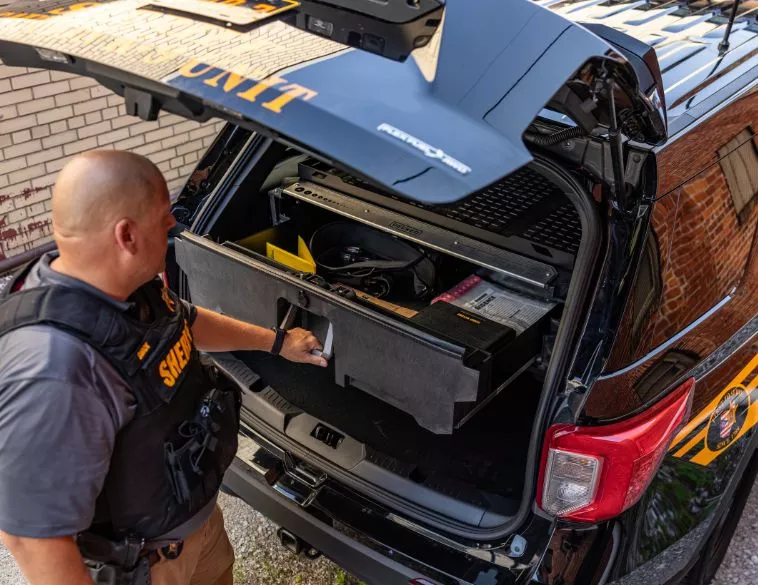Avoid Costly ELD Mistakes

Willful or accidental, non-compliance can have a serious impact on your business.

Electronic logging devices (ELDs) are a fact of life for truck fleets here in Canada, as well as in the U.S.A. Although the technology has been in use now for a number of years, fleets are still experiencing challenges from time to time, as they strive to comply with ELD mandates.
“Drivers still sometimes forget to log into their device at the start of a shift,” says Stephen White, Account Executive, Global Strategic Accounts at Geotab. “Or, more times than not, they fill the log out at the end, which leads to unassigned driving time, and that’s been a big issue with ELD.”
Another issue, White explains, is that the ELD may not be properly connected or updated. “Something as simple as a loose connection can cause the device to malfunction,” he says, adding that sometimes a driver could even unplug the device on purpose.
Why would they do so? “Drivers might want to stay on the road longer than they should, forgetting that the odometer is still rolling, or they might not want anyone to know where they have been,” White says. “They may have taken an alternative route, or they may have stopped somewhere to visit a friend, and they don’t want home base to see where they’ve been.”
Forgetting to switch duty status (from ‘driving’ to ‘not driving’) is another common mistake. This could happen, for example, when waiting for an available loading dock, White says. On the back end, fleet managers could fail to properly manage unassigned driving events or they can fail to review and certify daily logs.
“All these errors add up, and if they’re not corrected, they can put a fleet out of compliance,” White explains.
The knowledge gap
Sometimes, ELD mistakes are caused by a lack of knowledge or understanding. “A lot of drivers aren’t tech-savvy, and turning on a cell phone could be a challenge for them,” White says. “I don’t say that facetiously, but there can be a generational gap or lack of technical knowledge.”
White explains that mistakes often happen when a driver is rushed, tired or trying to juggle too many tasks. “And if they haven’t been properly trained on the ELD system, it’s easy for them to miss a step,” he says. “Companies that don’t invest in a strong onboarding program, or ongoing coaching for drivers, tend to see a lot more mistakes.”
A lack of communication can be another reason for ELD mistakes. If drivers don’t feel comfortable reporting issues with their device, problems can go unresolved, White says. “If they have a malfunctioning device, they might not know who to report the issue to, and they’ll just keep driving with it,” he adds.
Beyond a thorough understanding of how an ELD works, any new and inexperienced driver also need to know the law, as it applies to them. “They need to know when they’re supposed to take a break, how long they can drive, how much time they have to spend in the sleeper duty, why they can’t spend two hours in the sleeper berth and go back to driving, and so on,” White says.
Both seasoned and new drivers will have to be made aware of misconceptions and myths. “Drivers want to maximize their drive time and make the most money they can, so they will look for those ‘grey’ areas, “White adds. “Those grey areas don’t really exist, but drivers will still try to find them.”
Penalties and consequences
White says that although penalties for noncompliance vary, depending on the jurisdiction, they can be significant. “If a driver is pulled over and their logs aren’t compliant, they can be placed out of service on the spot,” he says. “If they’re dealing with an officer who is by-the-book, they won’t even let them drive the truck off the highway. They’re going to make the driver call a tow truck, and that’s going to add a significant cost to the downtime.”
In addition, fines can add up over time, and repeated violations will impact the fleet’s safety score. “Their CSA score is vital, not only for insurance costs, but a lot of shippers look at CSA scores and choose the company with the best scores, even if there’s a lower-priced alternative,” White says. “So your reputation could be severely damaged.”
Canada vs. U.S.A.
Although ELD mistakes can happen anywhere, White says that cross-border trips tend to introduce added complexities. “Both Canada and the U.S. require ELDs, but their hours of service rules aren’t identical,” he adds. “Canada allows for split sleeper berth provisions, and that’s different in the U.S.”
If your fleet travels into the U.S., then your drivers need to understand the laws on both sides of the border. If they don’t, they may unintentionally be out of compliance. “And in Mexico, where ELD regulations are still in the development stage, fleets face additional challenges with inconsistent enforcement,” White adds.
In order to make crossing the border as simple as possible, Geotab’s ELD solution, which is certified for both Canada and the U.S.A., takes all the guesswork out of the equation. All a driver has to do when crossing the border is press a button that will switch the ELD to either Canadian or American rules, assuring that they remain in compliance.
Avoiding mistakes
While there are no foolproof ways of avoiding all ELD mistakes, White says that combining reliable technology with strong processes and ongoing training gives fleets the best shot at success.
“A good ELD solution will guide drivers with prompts that automate the process as much as possible,” he says. “Some systems can even notify fleet managers when logs are incomplete or when a malfunction occurs, so they can be corrected quickly.”
Drivers also need to understand the importance of compliance. “When they understand that accurate logs protect their safety and reduce their stress, they’re much more engaged,” White adds.
ELD regulations are here to stay, and although laws vary from jurisdiction to jurisdiction, fleets that invest in the right equipment and the right training have a good chance of staying compliant, reducing downtime and eliminating costly fines.




